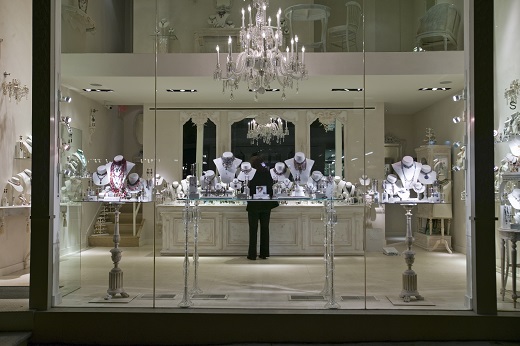|
|
JBT Chief Predicts Rise in Bankruptcies
Apr 20, 2020 5:09 AM
By Joshua Freedman
|
|
|

RAPAPORT... Earlier this month, the Jewelers Board of Trade (JBT) said it would issue two parallel ratings in its company credit reports to show the effect of COVID-19 on liquidity. In an April 6 interview with Rapaport News, Erich Jacobs, president of the Rhode Island-based credit agency, explained the impact of the crisis, how the ratings work, and why some businesses might not survive.
Rapaport News: How do you compile your ratings?
Erich Jacobs: JBT is a member organization, a nonprofit. It got its start about 135 years ago when a bunch of [jewelry] manufacturers had a tough time getting paid by certain retailers. So what they did is they formed an organization — this is oversimplifying it a bit — but they formed an organization where they would exchange information about retailers to say whether they were good or bad. In the worst cases, they would invite the retailers to come to Providence, [Rhode Island, a historic center for jewelry manufacturers,] and the Providence sheriff would throw them in jail until they paid their debts.
We’re not that extreme anymore, obviously, but we remain a member organization where the member pays an annual due and then they submit to us, in any variety of forms, information about their trades with their customers. [For example,] what are the terms of those trades, how long is the customer taking to pay?
They have a right to file a claim against a customer, and we can actually pursue that claim on their behalf as a collection service. In time, the claim will get listed in that particular debtor’s credit report. We only do that on behalf of our members. It’s basically an information-sharing organization for the members. We take that trade information and that gets put into a rather complex algorithm — our secret sauce — that then spits out a credit rating for a particular retailer, or it could also be another manufacturer or vendor or distributor.
That rating consists of two components: There’s something called the pay score, which is what most people pay attention to. That score ranges from one to four [indicating] good to bad. There’s also a pay score of zero, which means we don’t have enough info to develop a pay score.
And then there’s also a capital rating, which is for larger organizations. They can let us know how much capital they have. Those two components together comprise the JBT rating.
RN: Do banks use your ratings?
EJ: Banks do, and, in fact, we have banks as members. Particularly, [those] that do business with the jewelry industry are members of the JBT, as are things like shipping firms [and] jewelry insurance companies.
RN: Are reports available on companies that aren’t members?
EJ: Yes — we actively track 27,000 companies [to provide credit reports on them, and have less comprehensive information on many more].
RN: Your recent statement on credit ratings implied that COVID-19 had affected liquidity and companies’ ability to repay debts. Can you expand on that?
EJ: Most stores have basically just stopped. [Yet] some states have said financial firms are essential businesses, so what [jewelry stores] have said is we’re not going to sell jewelry, but we’ll certainly take the gold off your hands, and we’ll be a financial-services firm in the interim. They’ll say [they’re] an essential business as long as that’s all [they’re] doing. It depends on the state.
Some of them are surviving that way. Other stores are surviving because they have an online presence, but still for the most part let’s call it a hard stop. [If] you shut down New York City, you’re going to have a big hit. So it’s definitely had an impact, and that’s part of what we track, and it’s part of why we [adjusted the ratings system by issuing two ratings].
RN: Are you expecting more bankruptcies than usual this year?
EJ: Yes, I would expect there’s going to be some calling-out of folks that [are] running right on the edge right now, [particularly those for which the Paycheck Protection Program (PPP) isn’t going to help]. They’re going to have some trouble.
What’s going to be interesting there is we do track bankruptcies and [companies going out of business] very closely, but a lot of bankruptcy courts are shut down, so this will be interesting to see how this plays out.
RN: Are banks being flexible in their terms with clients?
EJ: That I couldn’t tell you, but I do know there’s a lot of confusion right now with the PPP program, because it’s being administered by banks. You can see on the various jewelry forums out there that there are folks that are very confused because the different banks are giving different messages.
RN: Will the federal aid be a big benefit in general?
EJ: It can’t hurt. It’s very hard to tell how that will help some stores. It may help with the payroll, but are they going to be able to generate any revenue if nobody’s going into the stores because the state’s in a lockdown provision?
It’ll bridge them over and allow them to keep the employees paid and keep them going, so again I suspect there will be some shakeout from this and there may be shakeout at the manufacturer, vendor [or] distributor level.
RN: You mean there will be companies that won’t survive this?
EJ: Yes, they’ll either have to consolidate with someone else or there might be a bankruptcy or something along those lines. [This is especially problematic for companies with more than] 500 employees, [as] you’re no longer eligible for PPP. [These businesses fall into a] “doughnut hole,” where if you’re a company that’s been running things really tight…and you don’t qualify for low-end stuff [or] high-end stuff because you’re not a Boeing [then the impact could be significant].
[Our first-quarter statistics on bankruptcies are] not going to be super-reflective [of the situation] because…the real impact happened in the last two weeks of March, and there’s a natural lag, so I don’t suspect you’re going to see a big uptick in out-of-businesses and bankruptcies for the first quarter. It’s really going to be the second-quarter report that’s going to have a lot of dynamics in it.
Main image: A jewelry store in Soho, New York. Inset: Erich Jacobs. (Shutterstock, JBT)
|
|
|
|
|
|
|
|
|
|
Tags:
Coronavirus, COVID-19, credit, Debt, Erich Jacobs, jbt, jewelers board of trade, Jewelry, Joshua Freedman, Liquidity, Paycheck Protection Program, PPP, Providence, Rapaport News, rhode island
|
|
|
|
|
|
|
|
|

|
|